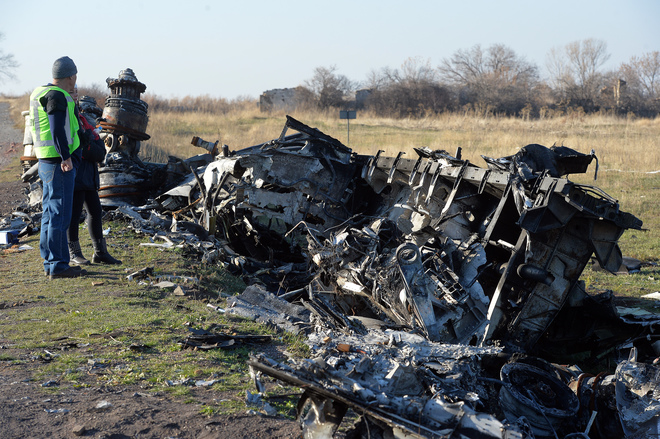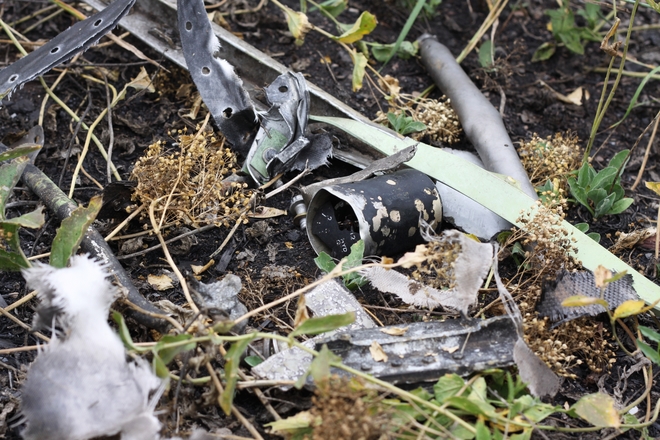However, a version of the story told to LifeNews by Sergey Sokolov, an aviation expert with the Russian federal information center, Analytics and Security, offers a shocking account of the last moments of MH17.
"I am pretty sure that the airliner was destroyed from within and that it was a special operation".In the interview, Sokolov details what he says are the cock pit voice recordings between the pilot of an Su-27 combat aircraft and a flight control officer.
Transcript fragment:Ivan Ivanov helped us understand the particularities of communication of military pilots. Ivanov has flown hundreds of combat and training flights.
Officer: 730, can you see the target?
Pilot: Yes, I can see it, leftwards to traverse, at higher altitude.
Pilot: Big one, right?
Officer: Yeah!
Pilot: 730! Didn't get it, repeat!
Officer: Right, the target is big.
"When an interceptor is directed to a target by military flight control, you often hear "target". But in some cases, e.g. if the target is not military or not specific, such words as "big" are used as well", he explains.
According to the recording handed over to our editors office, the pilot was receiving the coordinates of the other aircraft from ground control. A couple of minutes later, he reports visual contact with a passenger aircraft and then received his instructions.
Transcript fragment:Sergey Sokolov came into possession of this sensational voice recording (in digital form) as early as last year, but it was impossible to publish it back then.
Flight control officer: 730, don't approach it too close!
Pilot: Got it, flying off. 730! Continue following it...
Flight control officer: 730, got it, wait for further instructions.
(2 minutes later pilot established himself the communication, he is very agitated. - Editorial comment)
Pilot: There is a flash on the "big"! 730, I see a flash!
Flight control officer: 730, I didn't get it, repeat.
Pilot: There is a flash on the "big"... explosion!
Flight control officer: A missile?
Pilot: No, I didn't see any other element. Probably explosion on board.
Flight control officer: 730, explosion on board? From the ground? Confirm!
Pilot: No, I didn't see any [missile] hit. It exploded by itself!
"We understood that if we would have anything to do with a Hague or international investigation, we would need a first-hand source, hence we bought this original voice recording from SBU officers", said Sokolov.
The information center paid $250,000 for this voice recording, says Sergey Sokolov; they decided to pay such a large amount of money only after they were completely sure of the credibility of the source and authenticity of the recording.
The voice recording has undergone thorough checks - experts couldn't find any edits or added sounds. Military pilots analyzed the particularities of the communication, the expressions used and the execution time of the received orders.
Independent technical expert Jurij Antipov also agrees with the theory that the Malaysian Boeing was destroyed by an explosion from within. Immediately after the tragedy, he criticized the theories that suggested that the airliner was brought down by a missile or by a military aircraft. After the data from the black boxes was published, he became even more convinced of the bomb narrative.
"There was a full reset of all on board instruments at the same time," says the expert.It turns out that communication between the black boxes and all on board instruments and sensors was lost instantaneously, as if somebody had simultaneously cut all the wires. As previous incidents [of a missile shoot down of an airliner] show, when a missile or shell hits an aircraft, self-recording devices continue to record the conversations of pilots, flight/speed and other parameters of the aircraft for the next couple of seconds or even minutes. All the wires in black boxes are backed up in three different ways, and it is therefore almost impossible to damage them instantaneously, let alone by a fragmentation projectile. Even more significant for Jurij Antipov however, is the location of the airliner wreckage.
"We can see on the wreckage disperation map that, from the point at which the airplane was still intact in the air, part of the wreckage landed to the left of that location and, more importantly, also behind that location", he explains.
The airplane was moving at approximately 900 kmh. According to the laws of physics, all the wreckage should have hit the ground of forwards of the last known location. But that didn't happen.
"No external explosion can cause wreckage to be dispersed backwards from the last known location", says Antipov.
These facts, however, have been ignored by investigators. Dutch experts made a number of first-rate blunders during their investigation. A large amount of wreckage still remains at the crash site and nobody seems interested in recovering it.
"International norms for dealing with air crash investigations requires investigators to conduct tests for explosive materials in order to determine whether or not a bomb was involved. In the case of MH17, this appears to be the only test that was not performed", Antipov said.
While everybody was speculating what kind of weapon was used to shoot at the Boeing's cock pit, Jurij Antipov carefully investigated the airline's fuselage. According to him, photographs show quite clearly the signature of a bomb having exploded within.
"Evidence for an internal explosion include cabin window shades pushed outwards, suggesting that there was a short-period of overpressure in the passenger cabin itself which forced the shades outwards," explained Antipov.
Now that the investigation has more or less been completed, Sokolov is ready to provide all the collected data and evidence to an international group of investigators. However, for the time being, European officials and experts seem more interested in the creation of UN tribunal than in correcting their own mistakes.






[Link]